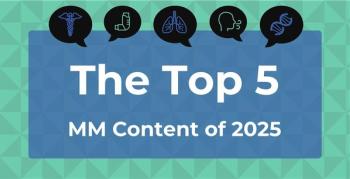
Study Examines Characteristics, Risk Factors of Depression in Early COPD
Depression is one of the comorbidities of chronic obstructive pulmonary disease (COPD), but not much is known about the characteristics of depression in people with early COPD. A recent study indicated that patients with early COPD who had depression were more likely to have a lower quality of life, be females, live alone, and have a low income.
Depression is one of the comorbidities of
The
The researchers identified 211 subjects with early COPD, and 14.2% of them also had depression. Of those with depression, they were found to predominantly live alone. In addition, those with depression also had a higher prevalence of diabetes.
“Comorbid depression in patients with COPD is related to low quality of life (QoL), high health care resource utilization, more frequent exacerbation, and increased mortality,” the authors explained. “Early identification of these psychiatric conditions and psychological interventions in patients with COPD might improve the depression symptoms and clinical outcomes.”
Additionally, the quality of life of those with depression was lower than those without it, and the quality of life index significantly correlated with depression severity, according to the analysis. The other risk factors for depression that the study found included being female, living alone, and low income.
It is already known that
“There is a lack of data on the clinical features of early COPD because it is extremely difficult to enroll patients in clinical trials or cohort studies because of the mild, asymptomatic symptoms rarely requiring a visit to the hospital,” the study said. “However, we can evaluate these patients through the national health checkup project.”
The authors considered potential explanations for the association of depression with COPD, including that smokers often tend to be depressed. They also considered that because COPD is a chronic inflammatory disease, depression among patients may occur as part of the systemic inflammatory response. Additionally, hypoxia may affect the development of depression since many of those with severe COPD requiring long-term oxygen therapy had depression.
“The key pathophysiological mechanisms underlying the association between COPD and depression are not fully understood,” the study stated. “However, because of several common contributing factors related to the development and progression of each disease, depression is considered one of the comorbid conditions of COPD.”
The study noted that the risk factors among early COPD patients were similar to the risk factors the general public faces for depression. Furthermore, additional longitudinal studies regarding early COPD are necessary.
Reference
Lee JH, Park MA, Park MJ, Jo YS. Clinical characteristics and related risk factors of depression in patients with early COPD. Int J Chron Obstruct Pulmon Dis. 2018:13;583-1590. doi.org/10.2147/COPD.S157165
Newsletter
Stay ahead of policy, cost, and value—subscribe to AJMC for expert insights at the intersection of clinical care and health economics.








